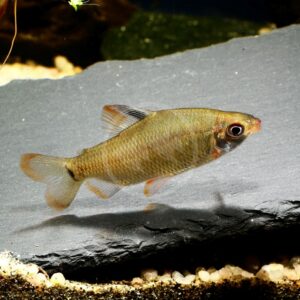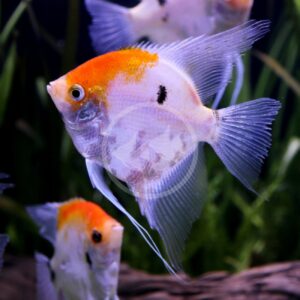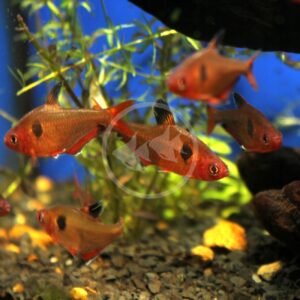Care Level: Easy
Temperament: Peaceful
Live Plant Safe: Yes
General Description: The Marbled Headstander is a type of tetra found widely throughout the Amazon and Orinoco river regions in Bolivia, Brazil, Ecuador, Peru, Venezuela and Colombia in South America. Marbled headstanders are extremely charming fish, following suit of their name in that they posture nose down as if they are doing a headstand. They are somewhat torpedo-shaped with a deep chest, pale color base and many dark patches across the body. Marbled headstanders are gregarious, so they should be kept in groups. An adult Marbled headstander can grow to approximately 5-1/2″.
Diet Requirements: In the wild the Marbled headstanders are omnivores. A diet made up of various high quality vegetable and protein based flake foods and sinking pellet foods are ideal, in addition to offering frozen foods such as bloodworms, daphnia, brine shrimp that contains spirulina algae and other mixed freshwater preparations. Variety is the spice of life in order to maintain color, immune function and longevity of your fish.
Care Requirements: A very established, minimum 55 gallon aquarium is needed for a group of Marbled headstanders. This fish can not be put into a biologically immature aquarium. Bieekly water changes are encouraged to keep water parameters in good condition (Nitrates < 30 ppm). Marbled headstanders prefer gentle water flow and soft water. Driftwood or branches, live plants (particularly floating types) and a sandy or fine substrate are components for the ideal environment of a Marbled headstander. Given their peaceful nature, careful selection of harmonious tank mates is needed for the best success of keeping Marbled headstanders. Compatible options include a handful of tetra, catfish and more docile cichlids for example. Avoid long finned fish, as the Marbled headstander has been observed to nip. Recommended water conditions, 76-82° F, KH 8-10, pH 5.5-7.5.
Purchase Size: Medium: 2” to 2-1/2”
Note: Your item may not look identical to the image provided due to variation within species. Purchase sizes are approximate.












